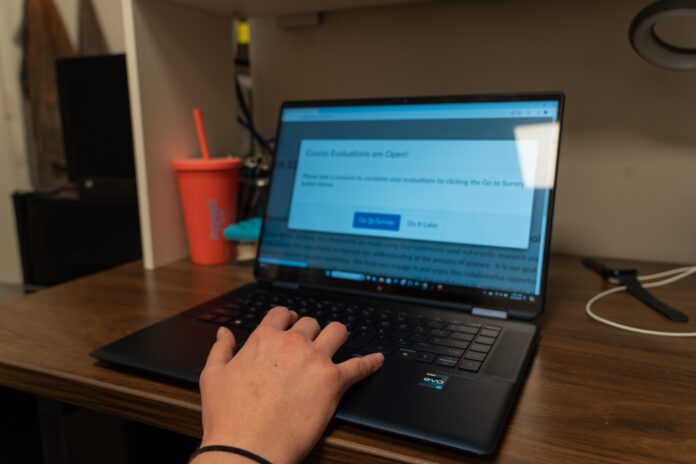
By Jacob Boone | Staff Writer
It’s that time of the year. You can count weeks on one hand, and every time you open Canvas, you’re greeted with “Course Evaluations are Open! Please take a moment to complete your evaluations by clicking the Go to Survey button below.”
The moment it takes to fill out course evaluations may not mean much to students, but their value to professors is a different story.
“The chairman looks at your course evals, and that determines your pay raise,” Dr. Steven Rich, associate professor of finance, said. “It affects it, at least.”
Course evaluations impact more than a professor’s salary. In many cases, they can shape the way a class is taught.
“Students were saying 10 chapters on a test was too much,” J.D. Lotte Bostick, clinical professor in the department of accounting and business law, said. “I read that enough that I was like, ‘You know what? I think they got a point.’ So I got approval to change the way that I do it, and it seems to be successful.”
From the professor’s side, course evaluations are anonymous.
“The anonymity allows you to be more honest,” Rich said.
Course evaluations are broken down into scale ratings of the professor’s performance and individual comments. Rich has read course evaluations for each of his 36 years of teaching and said he filled them out at Baylor 40 years ago.
“The most useful stuff is the comments,” Rich said. “That’s why I stopped using the flipped classroom. Even though test grades went up a letter grade when I flipped the classroom, it was so intense, a lot of students didn’t like it.”
Bostick said that “knowing that the professors actually read them and take action to improve our teaching based off of them” will encourage students to be honest but also aware of the personal impacts their comments can have.
“I think students need to be respectful in it, stick to constructive criticism and stay away from personal stuff,” Bostick said. “I have not ever experienced that, but I know other professors who have, and it discourages them.”
Bostick said that for students looking at BuBooks and professors reading their own course evaluations, there are numerous reasons why ratings could be low.
“Sometimes student evaluations are low because a class is harder,” Bostick said. “There are subjective reasons why evaluations can be lower, [but] that doesn’t really mean that the professor is good or bad.”
While course evaluations are written in retrospect, their real purpose is forward-facing.
“There is always room to improve as a professor, always room,” Rich said. “Y’all see it from a different perspective than we do, so if a student has input on how to improve a class, then a professor should care a lot about them.”





